As farming is the focal point of Stardew Valley, knowing the best methods to prosper is key to opening up all the additional content the game has to offer. Along with livestock and crafting, different crops thrive through each season of the year, and it’s important to know which crops are best to grow when, to get those hearty funds flowing. Therefore, here is our guide to the best Summer Crops in Stardew Valley.
The Best Summer Season Crops in Stardew Valley
As you roll out of the Spring season and into Summer, there are different crops to focus on that will help keep your funds flowing. While most can be grown easily enough on the Farm, there are ones that take longer than others, or cost more to grow, or require other tasks done before you can actually “unlock” them. Either way, they are the best crops to have from the start of Summer to the end.
Granted, if you have the Greenhouse on your Farm already unlocked some of that contingency is moot, as you can grow any type of crop there you wish year round, but our list is based on what to grow outside.
Best Overall Summer Crop – Melons
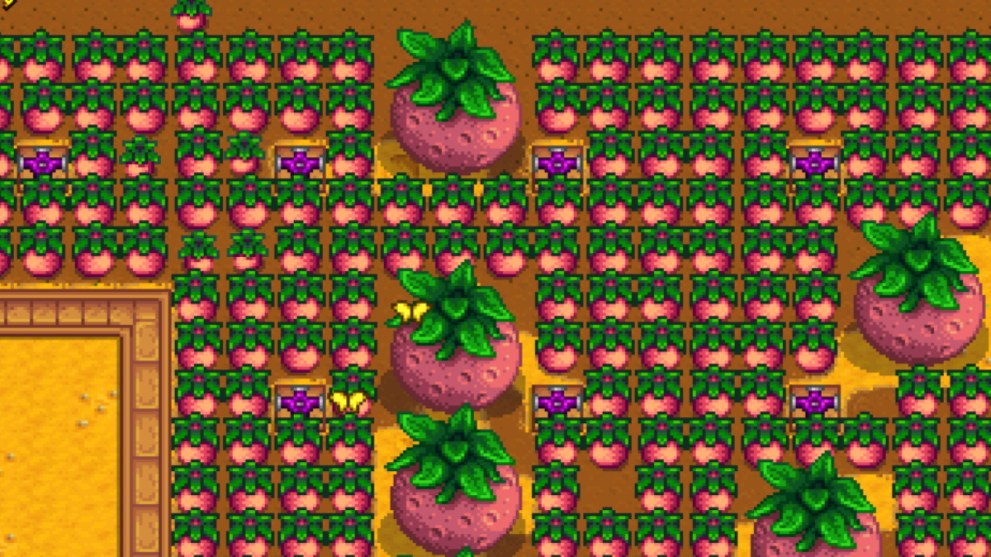
Of all the Summer-specific crops to grow on your Farm, Melons are by and far the best overall choice. Melon Seeds are available the first day of Summer from Pierre’s at the lowest price of 80g each, though you can also buy them from the Joja Mart (100g), or the Traveling Cart (120g – 1,000g). So on that front they are very affordable.
Melons take 12 days to fully grow, meaning you can get two full harvests of them per season. After harvesting, should you choose to sell the fruit directly the base price starts at 250g and goes up to 500g at iridium grade, giving you a very hefty return on every melon. With the “Tiller” farming perk you can get a 10% buff to those prices as well.
While being worthwhile just as a basic crop, Melons are incredibly profitable when used for Artisanal Goods. If put into a Keg to produce Melon Wine, the base price of that is 750g, and goes all the way up to 1,500g at iridium grade, if you use high-quality Melons. With the “Tiller” perk that means you can potentially get up to a whopping 2,100g per Melon Wine. As well, you can put Melons in Preserves Jars to make Melon Jelly, which go for 550g.
On top of all that, Melons are one of only three crops in the game that can potentially grow into a Giant Crop, as seen in the picture above. Harvesting a Giant Crop yields you 12-15 items, which is also very lucrative if you get lucky.
Starfruit
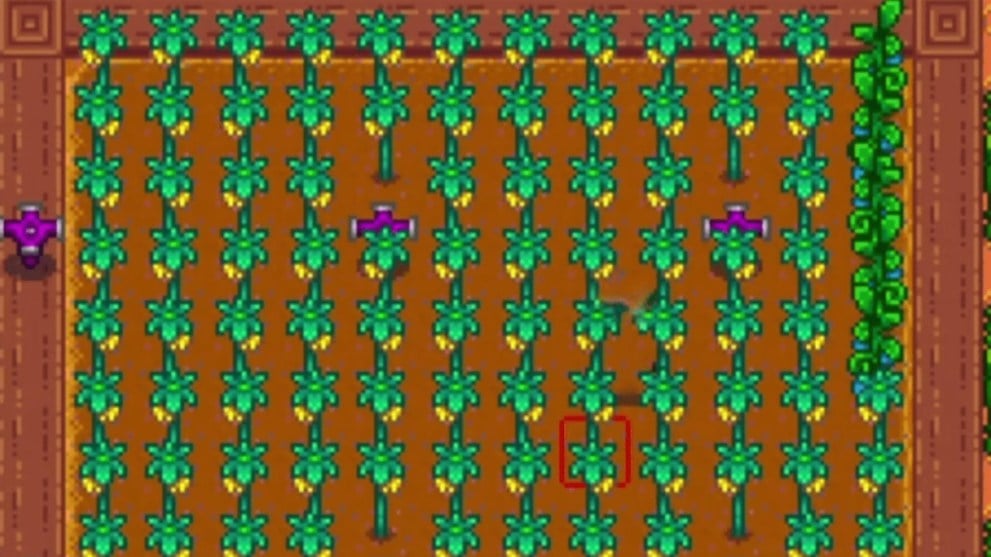
A close second to Melons is the coveted Starfruit, which is essentially the Sweet Gem Berry of the Summer season. It’s very costly to grow, unless you’re flush with cash already, but the returns more than make up for it.
Starfruit Seeds are semi-rare, as they’re not locally sourced from Pierre’s or the Joja Mart. You’ll need to have the Bus unlocked by completing the also-costly Vault Bundle at the Community Center, so that you can travel to the Calico Desert. Once there, make your way to the Oasis Shop, where Sandy sells the Starfruit Seeds for 400g each.
To save yourself money after your initial investment, make sure to put one crop of your Starfruit into a Seed Maker, which will then produce more of the seeds for you to use as needed. Also, if you have the Greenhouse unlocked you can grow Starfruit year round in there.
Upon planting Starfruit Seeds, they take 13 days to grow, meaning you can squeeze in two harvests a season if watered properly. You can also use Speed-Gro or Hyper Speed-Gro fertilizer to quicken the process by a day or two.
Once ready to harvest, the base price of a Starfruit starts at 750g, up to 1,500g at iridium grade. This makes them the second-highest priced crop in the game behind Sweet Gem Berries. If you have the “Tiller” farming perk, that price goes even higher.
Not only that, Starfruit can be used to create essentially the most profitable Artisanal Goods. From a Keg, Starfruit Wine can start at 2,250g and go up to 4,500g each at iridium grade. If you have the “Artisan” perk, which raises your prices by 40%, that means you can get up to 6,300g per bottle of Wine. If you’d rather throw Starfruit in a Preserves Jar, you can get Starfruit Jelly that sells for 1,550g each.
Blueberries
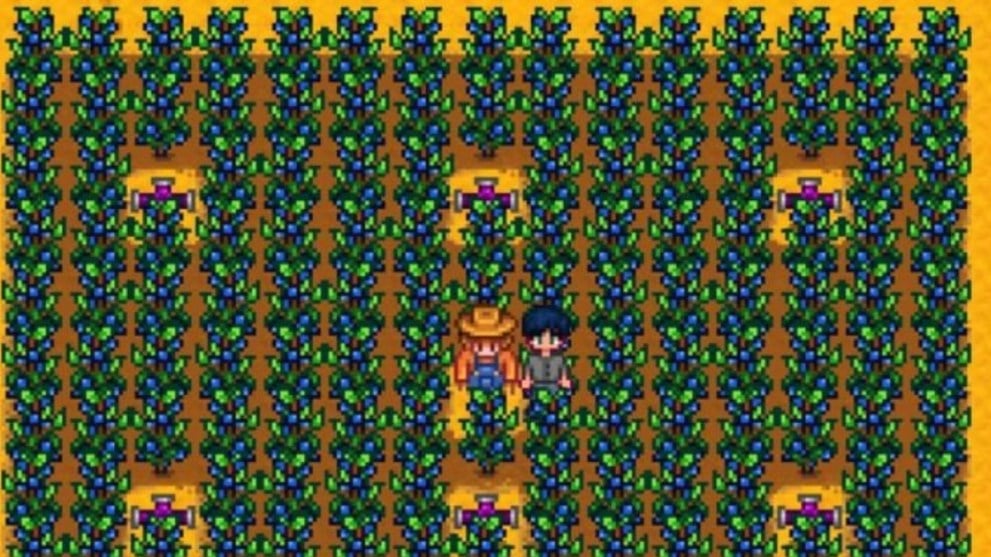
Blueberries are a more modestly profitable crop than the first two, but they’re still very reliable, as with just about every other berry there is in the game. They’re definitely cheaper to grow, which makes their returns still very worthwhile.
Blueberry Seeds are available at Pierre’s shop for just 80g each. While they’re not sold at the Joja Mart, they’re also available from the Traveling Cart for 120g – 1,000g, should they appear. This makes it pretty easy to stock up a good amount of seeds for the season (or for your Greenhouse year round).
After planting them wherever you wish on the Farm, Blueberries take 13 days to grow fully, and upon harvest you get at least 3 Blueberries each, with a 2% chance to get even more. Like other berries, they also regrow as the season allows, at just 4 days per regrow. If you have Speed-Gro fertilizer, you can even get another full harvest if planting on Day 1 of the season.
With so many Blueberries to collect, their base selling price starts at 50g each, and goes up to 100g at iridium grade. So literally each tile of Blueberries you gather is profitable no matter what.
They can also be used for Artisanal Goods including Blueberry Wine, which can go for 150g each up to 300g at top grade. Remember, if you have the “Artisan” farming perk, those prices jump by 40%. They can also be made into Blueberry Jelly with a Preserves Jar that goes for 150g each.
Pineapples
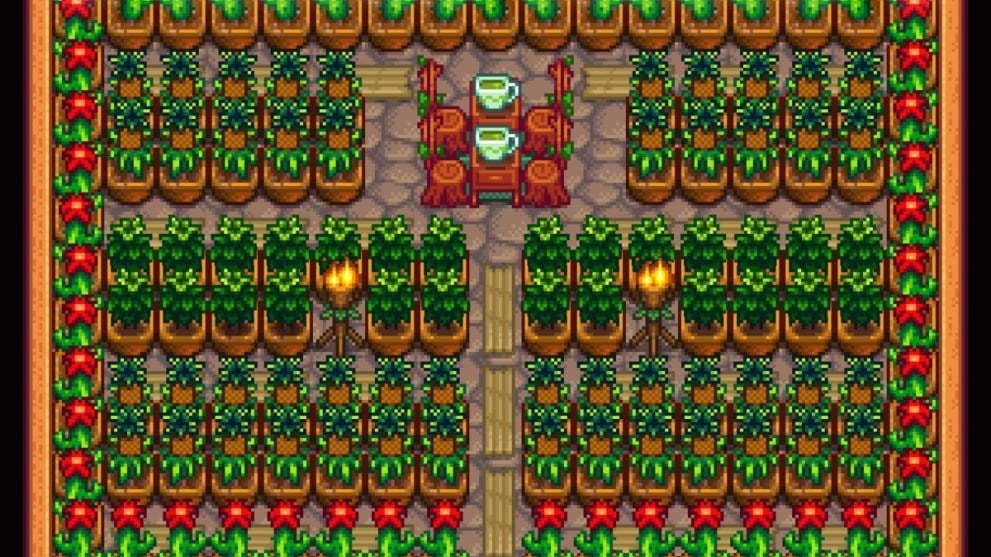
Pineapples are a more unique, endgame choice on the list, as they can only be obtained by first unlocking travel to the Ginger Island. To do this, you’ll need to complete repairs on Willy’s ship at the ocean dock, which takes a considerable amount of materials. For more details on the entire process, have a look at our Ginger Island guide.
Furthermore, Pineapple Seeds are not purchasable from anyone in Pelican Town, or even the Traveling Cart. They can only be found on Ginger Island, but can still be grown either there or back on your Farm in Pelican Town. To get them, instead of spending money you have to trade at least 1 Magma Cap to the Island Trader, which can be foraged from the Volcano Dungeon.
Once you have as many Pineapple Seeds as you can get, given the difficulty of obtaining them you’ll want to drop at least one into a Seed Maker to help further build up your stock.
Upon planting them, Pineapple Seeds take 14 days to fully grow, and everything that you harvest is essentially pure profit, having spent no money on them initially. They also regrow after 7 days. At base price each pineapple goes for 300g, up to 600g at iridium grade.
They can also be placed in a Keg to make Pineapple Wine that sells for between 900g and 1,800g at top grade. With the “Artisan” farming perk that gives you an extra 40% on all your Artisanal Goods, that can go up to 2,520g. You can also put them in a Preserves Jar to make Pineapple Jelly that sells for 650g each.
In terms of endgame crop harvesting, given their pure profit turnaround, Pineapples are definitely one of the top choices.
Red Cabbages
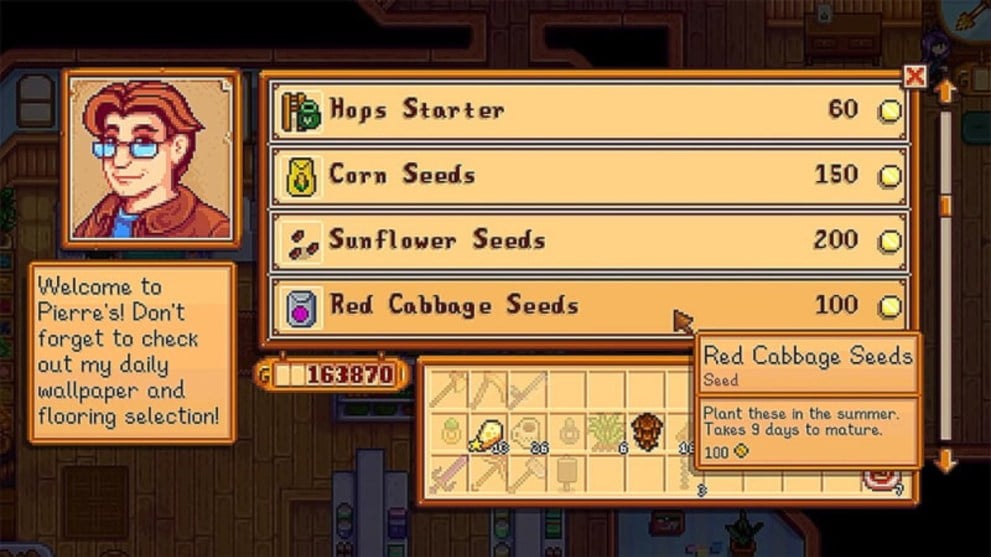
Last but not least, we have Red Cabbage, the one vegetable on our list that makes the grade for one of Summer’s top crops. Available starting in Year 2, they’re relatively cheap to buy, sell for good profit, and are among the quickest to grow.
Red Cabbage Seeds are mainly sold at Pierre’s shop for 100g each, but can be found at the Traveling Cart as well on occasion for 150g – 1,000g. Strangely, they’re another seasonal item not found at the Joja Mart.
Either way, once you have a good stock and get to planting, Red Cabbage takes 9 days to fully grow, though that can be quickened with Speed-Gro fertilizer. This can help guarantee you three full harvests of this vegetable, as it can be hard to pull that off without sowing on Day 1 and diligent watering.
When harvest comes, the base price of a Red Cabbage starts at 260g and goes up to 520g at iridium grade. This gives a very substantial profit on each, and they can also be thrown in a Keg or a Preserves Jar to make Artisanal Goods that go for nearly 600g each. It all makes for a very decently reliable Summer crop to help bolster those second-year funds.
That concludes our guide to the best Summer Crops in Stardew Valley. We hope you find this helpful, and let us know which crop is your favorite to grow in the game.
Be sure to check out all of our other guides, such as the best Fall Crops in Stardew Valley.

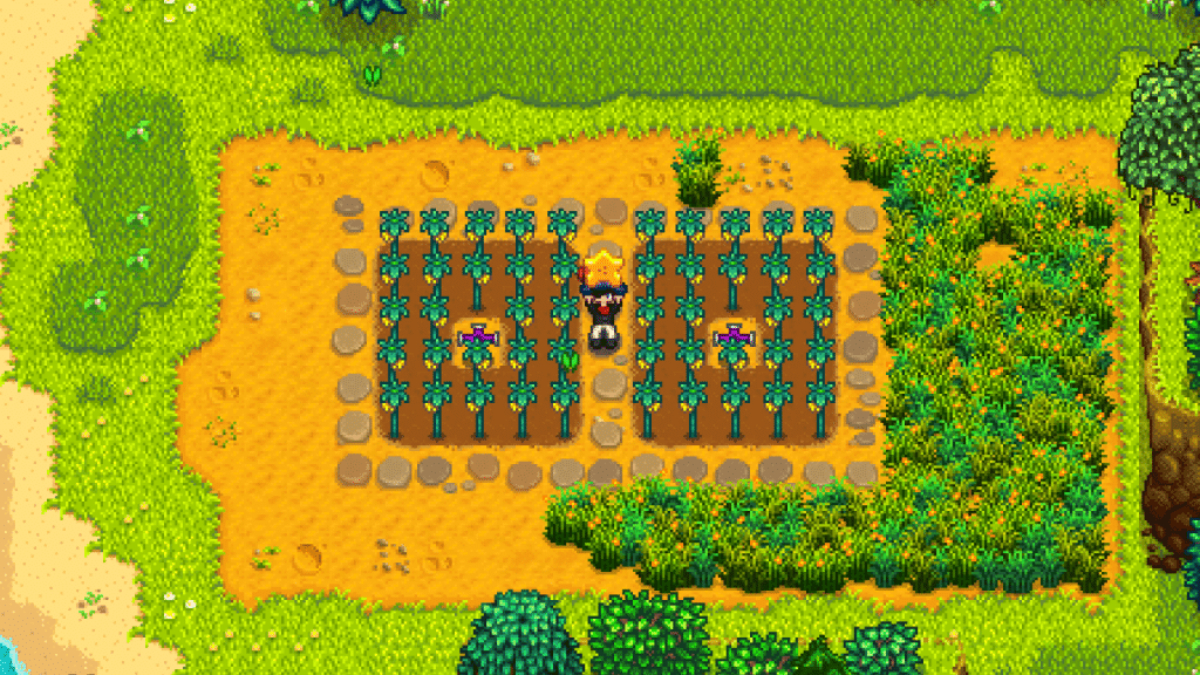







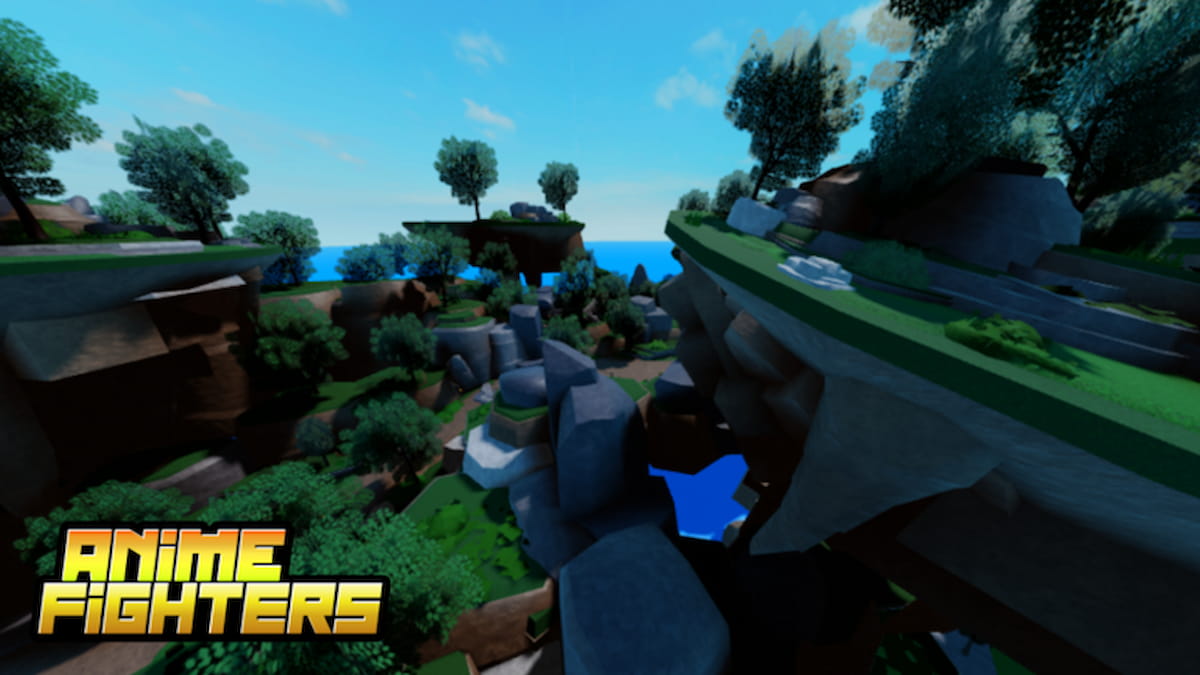



Updated: Jul 28, 2023 01:57 am